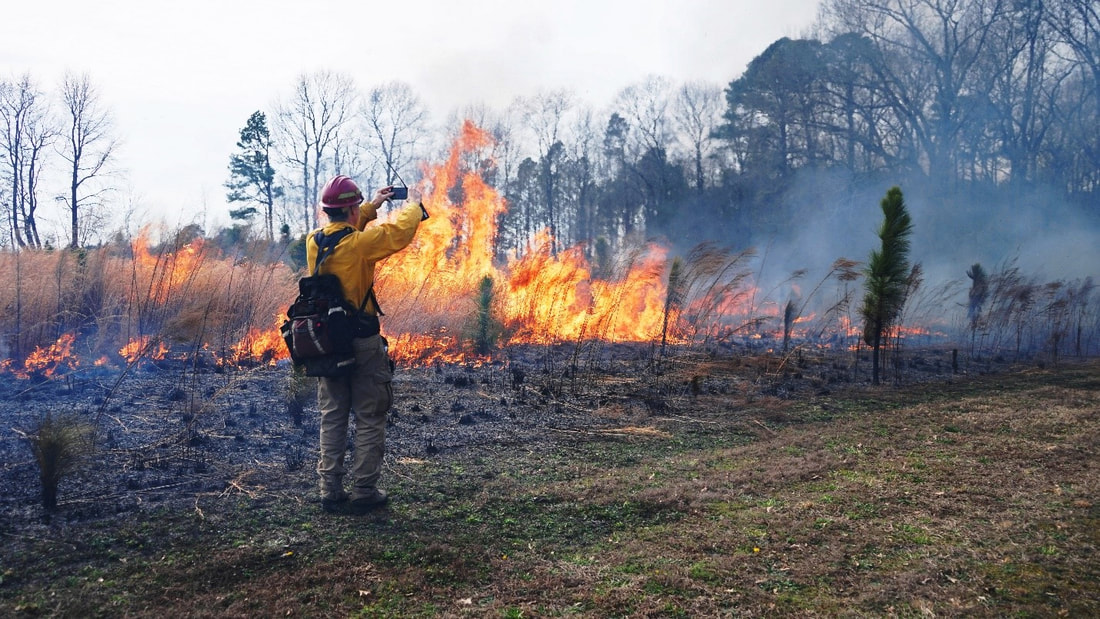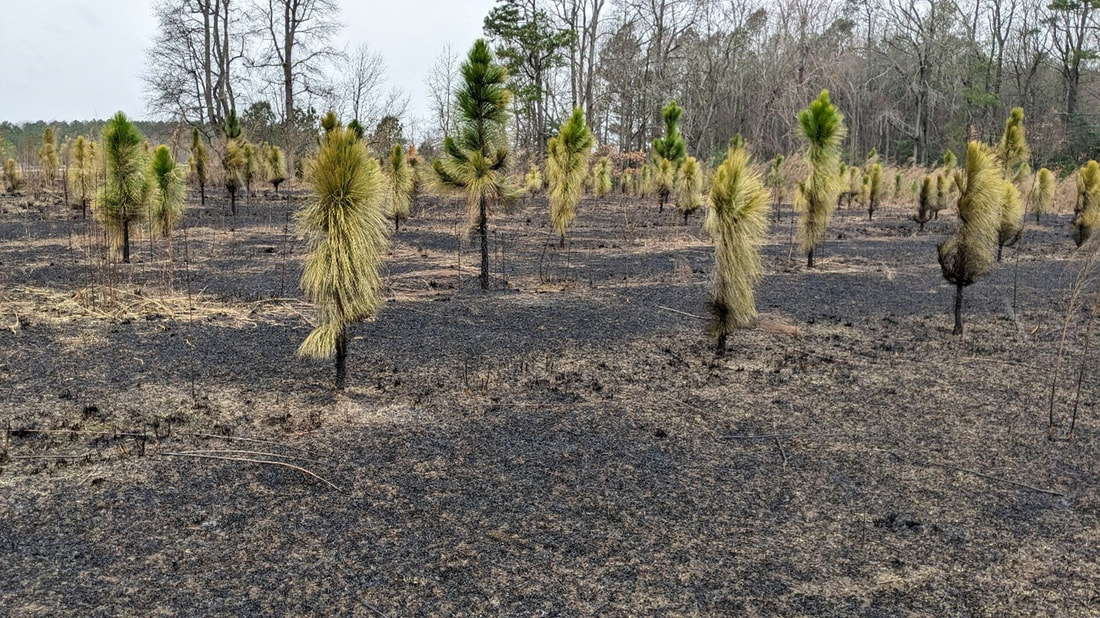GOOD FIRE
For millennia and long before Europeans settled the North American Continent fire shaped the coastal plains landscape. The fires originated from lightning strikes as well as Native American fires. Because longleaf pine trees are both relative fire resistant and fire dependent, they thus became the predominant tree species in approximately 90 million acres of the North American southeastern and gulf coast coastal plains.
In 1607, the settlers at Jamestown noted the abundance of longleaf pine trees and immediately began harvesting this valuable resource. Europe and the world were in great need of the products these great pine trees produced; naval stores & timber. Thus began the harvesting of this seemingly endless supply of longleaf pines until this iconic tree species in Virginia was judged to be all but extinct in 1893.
In 2019 when the Smithfield town council voted to plant longleaf pines in Windsor Castle Park, they also voted to use periodic prescribed burns to mimic the natural and set fires of the past. They recognized that the vibrant and unique understory ecosystem associated with longleaf pine savannas were also fire dependent. This determination was made after considering expert testimony and recommendations from the Nature Conservancy, the Virginia Department of Forestry and The Virginia Department of Conservation and Recreation.
So, on February 22, 2024, the first prescribed burn or “good fire” was initiated in a 2.2-acre plot of planted longleaf pines under the leadership of the nature conservancy.
In 1607, the settlers at Jamestown noted the abundance of longleaf pine trees and immediately began harvesting this valuable resource. Europe and the world were in great need of the products these great pine trees produced; naval stores & timber. Thus began the harvesting of this seemingly endless supply of longleaf pines until this iconic tree species in Virginia was judged to be all but extinct in 1893.
In 2019 when the Smithfield town council voted to plant longleaf pines in Windsor Castle Park, they also voted to use periodic prescribed burns to mimic the natural and set fires of the past. They recognized that the vibrant and unique understory ecosystem associated with longleaf pine savannas were also fire dependent. This determination was made after considering expert testimony and recommendations from the Nature Conservancy, the Virginia Department of Forestry and The Virginia Department of Conservation and Recreation.
So, on February 22, 2024, the first prescribed burn or “good fire” was initiated in a 2.2-acre plot of planted longleaf pines under the leadership of the nature conservancy.
Photo by John Bunch
The above photo shows many aspects of this prescribed burn:
- The burn boss, Bobby Clontz, surveying the burn configuration, monitoring progress and directing his burn crew when & where to set head fires.
- The low flames nearest the burn boss is a backing fire and was the first to be ignited along the downwind margin of the designated burn area. It is slowly creeping upwind.
- Backing fires are first used to create a section of the burn area on the downwind side so that when the head fires race downwind they will extinguish themselves. This is a way of containing the fire to the designated burn area.
- As you can see there are two segments of head fire with flames about 4 feet high. The flames that are about 10 feet tall are where two front fires are converging.
- One very interesting note. Backfires are more destructive to longleaf pines than head fires. That is because the slow rate of travel of backfires concentrates the heat at the base of the pine trees for a longer period of time. Head fires move quickly and dissipate much of their heat vertically.
- In planning each burn, the burn boss also takes into consideration the needs of wildlife and leaves wildlife escape routes during the burn. The burn crew reported one hispid cotton rat and three rabbits safely exiting the burn. They also observed one coopers hawk that was attracted to the burn and soared overhead for a while afterward.
Photo by Ryan Walsh
The above photo was taken the morning after and shows dramatic changes to the burned area. To the veteran burn crew, this was a textbook burn accomplished in about one hour. To this untrained observer and the two recently fire trained & certified ODU students, it was a great learning experience. For a short video of the burn, click on the link below:
drive.google.com/file/d/1p1zHgNm17UV1odPRgLTGWpnfHQDESoip/view?usp=sharing
drive.google.com/file/d/1p1zHgNm17UV1odPRgLTGWpnfHQDESoip/view?usp=sharing









